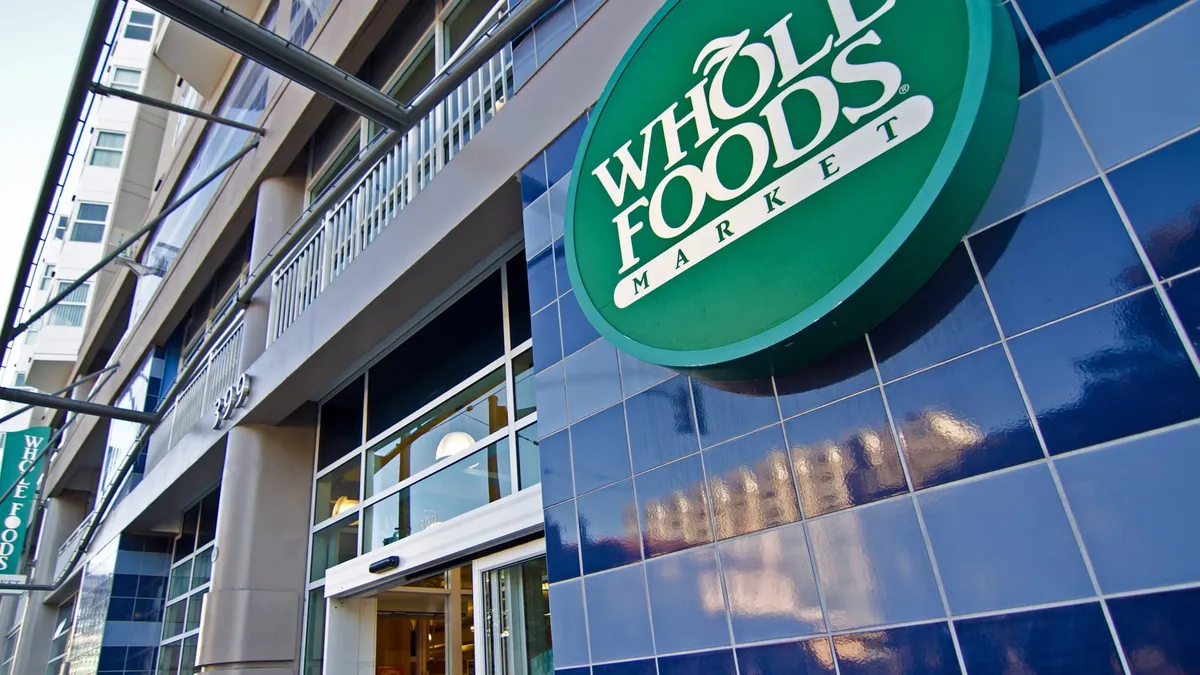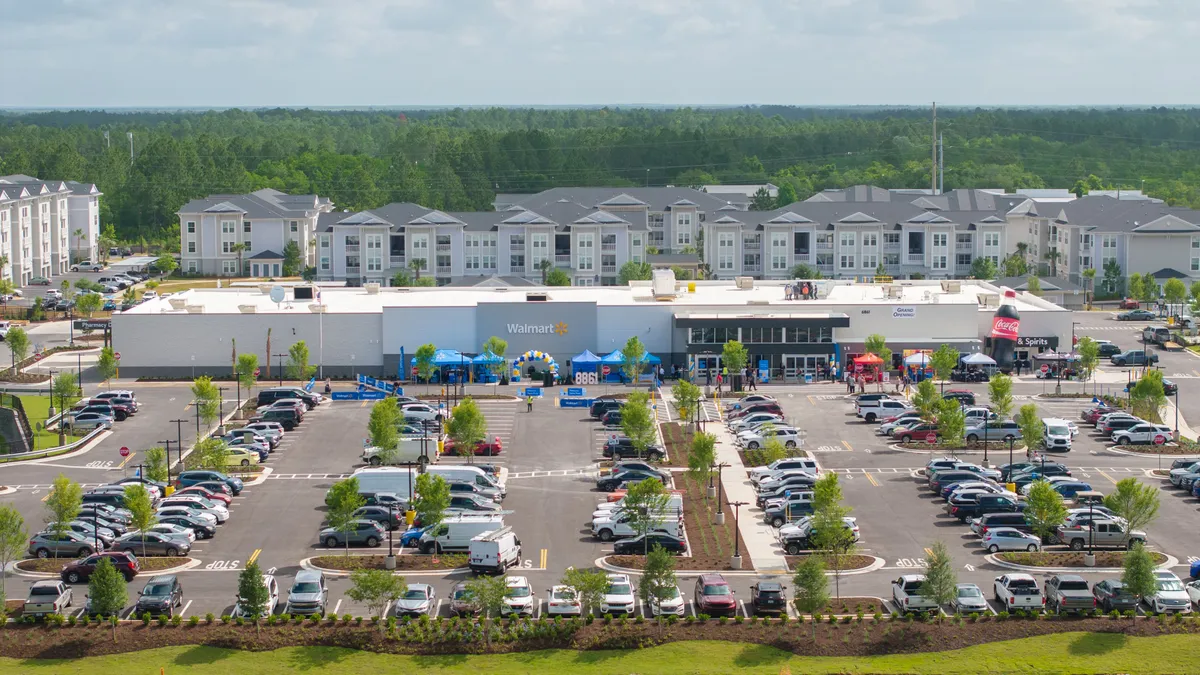Dive Brief:
- Sales at Amazon’s retail stores, which include Whole Foods Market, Amazon Fresh and Amazon Go, rose 12.5% in the company’s second financial quarter, reaching just over $4.7 billion, according to a Friday earnings release.
- Amazon Fresh opened 12 stores in the U.S. and the U.K. during the period, which ended June 30.
- Amazon’s e-commerce sales, which include store-based grocery delivery and pickup, dropped for the second straight quarter, falling 4.3% in Q2.
Dive Insight:
Amazon has strung together a series of quarterly increases in year-over-year physical store sales, indicating the company’s specialty and tech-enhanced stores are resonating with shoppers even as prices climb.
Although Amazon didn’t specifically call out the impact of inflation on its store sales, the fact is that those higher prices coupled with elevated at-home spending are flowing through to grocers’ bottom lines. Spending at grocery stores increased 8.3% in June, according to estimated data from the U.S. Census Bureau.
The vast majority of Amazon’s store fleet consists of Whole Foods locations, which now number more than 500. The specialty chain has continued to open locations at a steady clip, with five store openings announced in July alone. Amazon has also announced the addition of its Just Walk Out system and new-and-improved Dash Carts to Whole Foods stores, showing that Amazon sees its proprietary technology as a way to further boost sales at the chain.
Although Amazon’s e-commerce sales fell once again, the retailer made up for the decline mainly through fees from Prime customers and marketplace sellers. Subscription sales rose 10% to $8.7 billion, seller services revenue rose 9.1% to $27.4 billion and advertising sales rose 17.5% to $8.8 billion.
“While Amazon’s retail business has softened, it has made up for the weakness with services,” GlobalData Managing Director Neil Saunders said in emailed comments. However, Prime subscription revenue growth slowed from last quarter’s 13% rise, which according to GlobalData was “a significant deterioration from the average quarterly growth rate of 30.5% over the last three years.”
The e-commerce giant’s operating expenses rose 11.9% to $117.9 billion, according to a company press release. That helped push its operating income down 56.9% year-over-year to $3.3 billion. Amazon notched another net loss, (including a pre-tax valuation loss of $3.9 billion from its investment in electric vehicle company Rivian Automotive), this time reaching $2 billion from last year’s net income of $7.8 billion.
Still, the company’s year-over-year comparisons in coming quarters are set to ease up, since they won’t be up against the pandemic-related e-commerce surge or last year’s Prime Day. The latter dinged about 400 points from this year’s Q2 revenue, Amazon’s Chief Financial Officer Brian Olsavsky told analysts Thursday.















